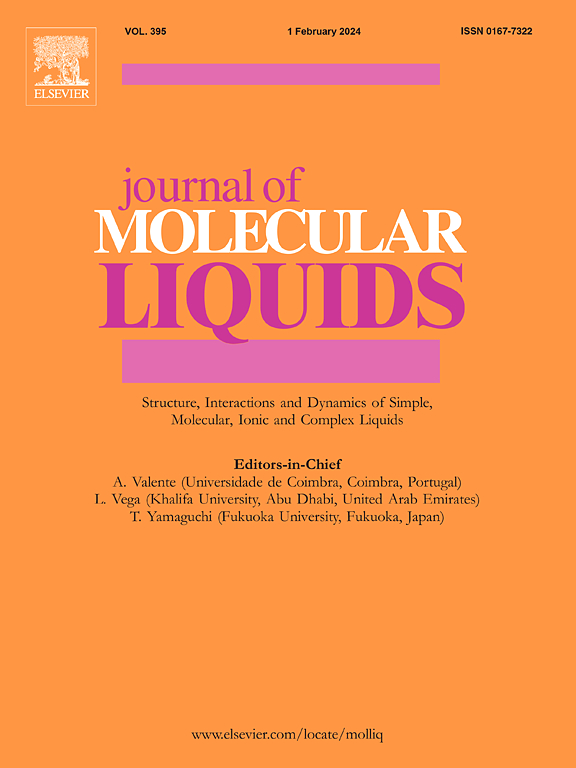Synthesis and characterization of betaine-based natural deep eutectic solvents for electrochemical application
IF 5.3
2区 化学
Q2 CHEMISTRY, PHYSICAL
引用次数: 0
Abstract
Lately, deep eutectic solvents (DESs) have been taken into detailed consideration as potential electrolytes for use in various electrochemical devices. This study reports a successful synthesis of three novel natural deep eutectic solvents (NADESs) based on betaine hydrochloride as the hydrogen bond acceptor and glycerol, glycolic acid, and ethylene glycol as hydrogen bond donors. Comprehensive research, including ATR-FTIR, surface tension, rheological properties, and ionic conductivity, revealed that the betaine hydrochloride–ethylene glycol (BETCl−:MEG) system exhibited superior physicochemical characteristics. This NADES was subsequently evaluated as an electrolyte in an electric double-layer capacitor (EDLC), demonstrating excellent electrochemical performance with a specific capacitance of 94 F g−1 (0.5 A g−1) and excellent electrochemical stability. Notably, this study represents the first successful application of a betaine hydrochloride-based NADES as a liquid electrolyte in an energy storage device, highlighting its potential as a sustainable alternative to other innovative electrolyte systems, such as deep eutectic solvents based on choline chloride. These findings suggest that betaine-based NADESs hold significant promise for future applications in energy storage technologies.

求助全文
约1分钟内获得全文
求助全文
来源期刊

Journal of Molecular Liquids
化学-物理:原子、分子和化学物理
CiteScore
10.30
自引率
16.70%
发文量
2597
审稿时长
78 days
期刊介绍:
The journal includes papers in the following areas:
– Simple organic liquids and mixtures
– Ionic liquids
– Surfactant solutions (including micelles and vesicles) and liquid interfaces
– Colloidal solutions and nanoparticles
– Thermotropic and lyotropic liquid crystals
– Ferrofluids
– Water, aqueous solutions and other hydrogen-bonded liquids
– Lubricants, polymer solutions and melts
– Molten metals and salts
– Phase transitions and critical phenomena in liquids and confined fluids
– Self assembly in complex liquids.– Biomolecules in solution
The emphasis is on the molecular (or microscopic) understanding of particular liquids or liquid systems, especially concerning structure, dynamics and intermolecular forces. The experimental techniques used may include:
– Conventional spectroscopy (mid-IR and far-IR, Raman, NMR, etc.)
– Non-linear optics and time resolved spectroscopy (psec, fsec, asec, ISRS, etc.)
– Light scattering (Rayleigh, Brillouin, PCS, etc.)
– Dielectric relaxation
– X-ray and neutron scattering and diffraction.
Experimental studies, computer simulations (MD or MC) and analytical theory will be considered for publication; papers just reporting experimental results that do not contribute to the understanding of the fundamentals of molecular and ionic liquids will not be accepted. Only papers of a non-routine nature and advancing the field will be considered for publication.
 求助内容:
求助内容: 应助结果提醒方式:
应助结果提醒方式:


